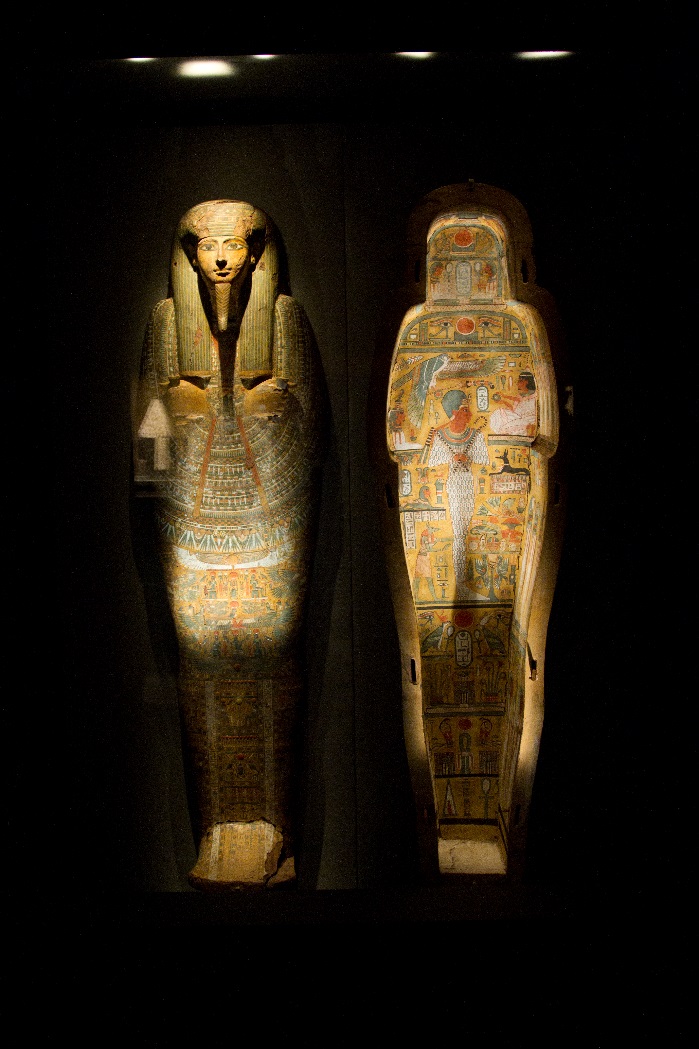Kevin Henderson stumbled onto exhibits design by accident and couldn’t be happier about it.
Coming out of the University of Houston’s Architecture program, Henderson was called in to help with an exhibition. He always liked sketching and the Arts, and while he was interested in product and industrial design, UH didn’t have a program in that at the time. After graduation, he rediscovered the Houston Museum of Natural Science.
The fast turnaround of exhibit projects appealed to Henderson straight away.
“There is an almost immediate sense of gratification when you draw something or design something [as an exhibits designer]. It becomes a reality a lot faster than with architecture!” Henderson said. “You get the rewards so much more quickly. Sometimes I feel bad about that.”
Henderson spent two years at HMNS as a junior designer, helping out with the design of the Hall of Paleontology when it was in Glassell Hall as well as the Welch Chemistry Hall, two versions ago. From there, he moved on to a private company where he was responsible for design and construction of the National Museum of the Pacific War in Fredericksburg, Texas, one of the highlights of his career.
In fall 1999, Henderson returned to HMNS for good. 16 years later, he’s worked on exhibits from the world-famous Lucy’s Legacy in 2008 to La Virgen de Guadalupe: Empress of the Americas today.
As Henderson puts it, there are three types of special exhibitions: the kind that comes with artifacts and display cases laid out; the kind that comes with only artifacts; and the kind that is assembled and organized by the museum. It’s up to the HMNS design team to figure out how to lay out the last two.
When designing an exhibit, Henderson has to consider aesthetics such as lighting and sound as well as how to best display an artifact for its educational value. One of his favorite examples of this is a display case in the Hall of Ancient Egypt featuring the Coffin of Neskhons. This ornate sarcophagus is located at the very end of the second long hallway in the hall, and the dark walls and spotlight placement make it light up like a beacon.

“I have to find a delicate way to allow the public to get up close to these delicate, priceless things,” Henderson said. “I find it a cool challenge to engage the visitor so that they’ll want to come see this artifact. Once they are there, I have to figure out how to let them see it without damaging it. Each exhibit has its unique challenges and that’s probably the main reason I enjoy doing what I do. It’s never the same; each project is different. These are fun puzzles to solve.”
Part of these puzzles is understanding the human mind, and Henderson has to employ psychological tactics as well when laying out the exhibit.
“I have to direct the visitor traffic flow through an exhibit. I don’t like to be heavy-handed in a gallery layout or to constrict or confine people down a set, rigid pathway,” Henderson said. “In many shows, there’s a chronological timeline to the story, so it isn’t helpful when the gallery is open. The visitor will roam freely and get lost. I need to subtly guide visitors through an exhibit so that unbeknownst to them, they’re following a story.”
La Virgen de Guadalupe: Empress of the Americas, open from Dec. 11 through early September, is an example of a special exhibit that was organized by HMNS, and Henderson played the leading role in designing the product on display on the museum’s third floor.

“We had a bit more environmental aspects in there with the different sections. You don’t want to overwhelm the objects, so you want to do just enough to hint at the feel of that area or era or culture, but the priority is the display of the objects,” Henderson said.
“There’s a reverence and respect for the original tilma and any image with the Virgin on it, so in designing that show, there had to be major consideration to treat the objects with even more reverence and respect,” Henderson added. “You notice that lighting is done in a certain way, the framing is appropriate, the music, everything contributes to a nice, soft, peaceful, quiet, meditative, respectful space.”
In the end, Henderson loves his job. He enjoys handling artifacts, working with other organizations and putting together a finished product. Most of all, he loves seeing the public’s reaction to his work.
“You walk around and see the kids running through, hearing them say, “Wow, this is so cool!” makes everything worthwhile. You feel like you’re contributing to something, opening some kids’ minds to some other topics,” Henderson said. “That’s one of my favorite things.”









